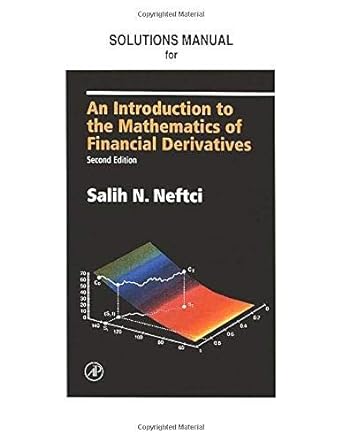Answered step by step
Verified Expert Solution
Question
1 Approved Answer
Investment Year Operating Income Net Cash Flow Proposal A: $680,000 1 $ 64,000 $ 200,000 2 64,000 200,000 3 64,000 200,000 4 24,000 160,000 5
Investment Year Operating Income Net Cash Flow Proposal A: $680,000 1 $ 64,000 $ 200,000 2 64,000 200,000 3 64,000 200,000 4 24,000 160,000 5 24,000 160,000 $240,000 Proposal B: $320,000 1 $ 26,000 $920,000 $ 90,000 2 26,000 90,000 3 6,000 70,000 4 6,000 70,000 (44,000) 20,000 $ 20,000 $ 55,000 $340,000 Proposal C: $108,000 123 $ 33,400 31,400 53,000 28,400 50,000 25,400 47,000 5 23,400 45,000 $142,000 $ 250,000 Proposal D: $400,000 1 $100,000 $ 180,000 2 100,000 180,000 Check My Work 00 000 160.000 23,400 45,000 $142,000 $250,000 Proposal D: $400,000 1 $100,000 $ 180,000 100,000 180,000 80,000 160,000 20,000 100,000 0 80,000 $700,000 $300,000 The company's capital rationing policy requires a maximum cash payback period of three years. In addition, a minimum average rate of return of 12% is required on all projects. If the preceding standards are met, the net present value method and present value indexes are used to rank the remaining proposals. Present Value of $1 at Compound Interest Year 6% 10% 12% 15% 20% 1 0.943 0.909 0.893 0.870 0.833 2 0.890 0.826 0.797 0.756 0.694 3 0.840 0.751 0.712 0.658 0.579 4 0.792 0.683 0.636 0.572 0.482 S 0.747 0.621 0.567 0.497 0.402 6 0.705 0.564 0.507 0.432 0.335 7 0.665 0.513 0.452 0.376 0.279 B 0.627 0.467 0.404 0.327 0.233 9 0.592 0.424 0.361 0.284 0.194 10 0.558 0.386 0.322 0.247 0.162 Next 2. Giving effect to straight-line depreciation on the investments and assuming no estimated residual value, compute the average rate of return for each of the four proposals. If required, round your answers to one decimal place. Proposal A Proposal B Proposal C Proposal D Average Rate of Return % % % % 3. Using the following format, summarize the results of your computations in parts (1) and (2) by placing the calculated amounts in the first two columns on the left and indicate which proposals should be accepted for further analysis and which should be rejected. If required, round your answers to one decimal place. Proposal Cash Payback Period B D Average Rate of Return Accept or Reject % % % % 4. For the proposals accepted for further analysis in part (3), compute the net present value. Use a rate of 15% and the present value of $1 table above. Round to the nearest dollar. Select the proposal accepted for further analysis. Present value of net cash flow total Less amount to be invested Net present value 5. Compute the present value index for each of the proposals in part (4). If required, round your answers to two decimal places. Select proposal to compute Present value index. Present value index (rounded)
Step by Step Solution
There are 3 Steps involved in it
Step: 1

Get Instant Access to Expert-Tailored Solutions
See step-by-step solutions with expert insights and AI powered tools for academic success
Step: 2

Step: 3

Ace Your Homework with AI
Get the answers you need in no time with our AI-driven, step-by-step assistance
Get Started


